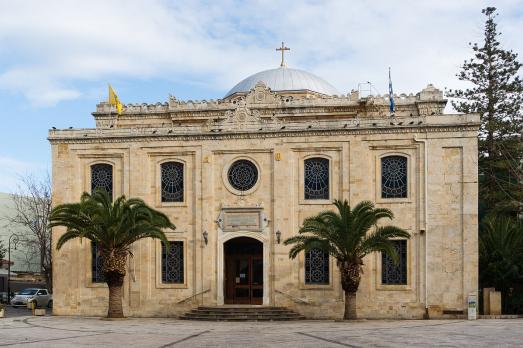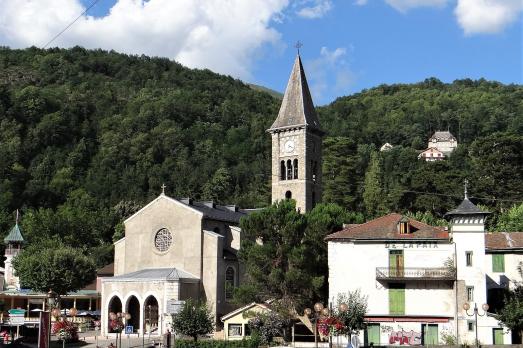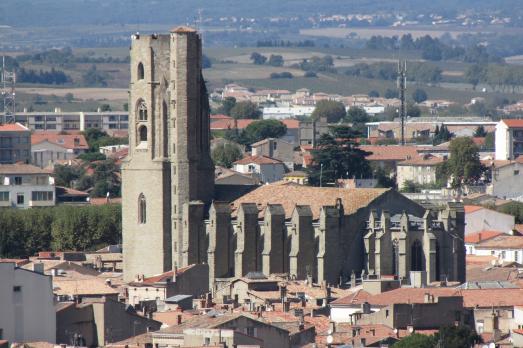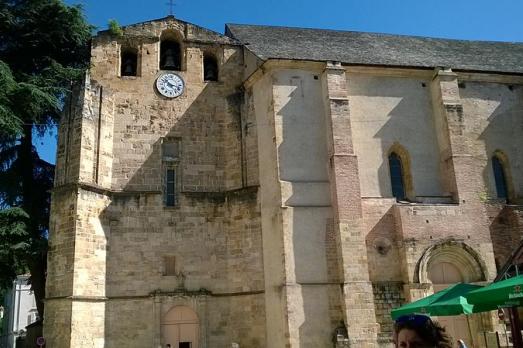
Church of Saint Titus, Asimi
Asimi, GR
.
Here you can search for a building to visit. You can use the map find destinations, or you can use the filters to search for a building based upon what different criteria.

Asimi, GR
.

Heraklion, GR
Over the centuries, the Church of St. Titus has continually alternated between the status of mosque and church, according to the will of the successive inhabitants of the island (Saracens, Byzantines, Venetians, Ottomans and Greeks). The temple was finally consecrated as a church in 1925.

Githio , GR
.

Vitina, GR
.

Koutouloufari, GR
.

Warszawa, PL
The Church of Saint Vincent of Paulo is a Roman Catholic church located in the Bródno cemetery. The church was built in the years 1887-1888 and designed by Edward Cichocki. From 1952 to 1960 it was a parish church. In 1960, this function was taken over by a brick church of Our Lady of Czestochowa built in the south-eastern corner of the cemetery.

Felgueiras, PT
The Church of Saint Vincent of Sousa displays two inscriptions on its façade. The first dating from 1162 and marking the construction of an arcosolium [embedded tomb]; the other, engraved in 1214, celebrates the Dedication of the Church [beginning of the cult]. The Church is composed of a single nave and a rectangular chancel, enlarged in the Modern Age (17th-18th centuries). The main façade features a Romanesque portal which opens out as a pentagonal structure stemming from the façade. This means the portal may be larger and more impressive symbolically. The lateral façades end in small arches on plain modillions as in other Romanesque churches in the area of Tâmega and Sousa. A drip-course runs over corbels on half of the wall of the south façade, suggesting that a roofed porch or a cloister [inner patio of a monastery] used to exist here. The carvings and paintings of themes alluding to the lives of Saint Vincent, Saint Joseph and the Mysteries of the Rosary date from the Modern Age. The paintings on the ceiling of the chancel were completed in 1693 by Manuel Freitas Padrão, one of the founders of the Brotherhood of Saint Luke of Guimarães.

Ax-les-Thermes, FR
A first church was erected at Ax-les-Thermes prior to the current building, dating from the 12th century. In 1240, the church was left intact by the fire, which had ravaged the rest of the city. It underwent many phases of restorations and alterations, notably in the 15th century, then in the 16th

Carcassonne , FR
This church is a fine example of the Languedoc Gothic style with a wide nave (20.25 m) and an imposing vault (23.5 m). The church has a bell tower accessible to the public by a staircase of 232 steps which offers a breathtaking view of the whole city of Carcassonne.

Foix , FR
This building's construction began in the 12th century, in 1125, after the canons took possession of an abbey housing the relics of Saint Volusien. The Wars of Religion inflicted damage on the building, notablu with burnt relics. A second phase of construction therefore took place between 1609 and 1670.

new
Nestled amidst the serene landscapes of the Harz region, lies a hidden gem for nature enthusiasts and history buffs alike - the Harz Monastery Hiking Trail. Lace up your hiking boots and embark on this captivating adventure that will transport you back in time.

The Holy Mile (Miglio Sacro) of Naples is a one-mile-long itinerary, through sacred places linked to the city's patron saint, San Gennaro, in the Rione Sanità district. Discover the city from a new perspective with this unique walking tour.

As a university city, cultural offerings abound in Tartu and will reach their peak after being designated one of three European Capitals of Culture for 2024. In this list, we've compiled the most interesting sacred places to visit in and around the old town.